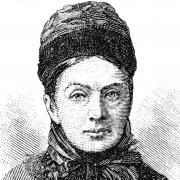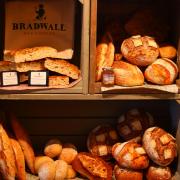Cheshire’s cheese guru, Laura Billington, shares the story of a cheese woven into the fabric of English history
Cheshire cheese holds a special place, not just for its unique taste, but also for its rich historical significance. With roots dating back centuries, and mentioned in the Domesday book of 1086, Cheshire cheese is a true icon in the world of dairy products.
Its origins can be traced back to Roman times, when cheesemaking techniques were introduced to the region. Cattle were grazed on salt marshes and the salt content caused cheese made from their milk to ripen slowly and give it the famous crumbly texture.

Cheshire cheese is renowned, of course for this crumbly texture and distinct flavour. Traditionally, it comes in three variations: white, red, and blue. The white variety is aged for a shorter period and has a mild, fresh taste; the red variation is coloured using annatto (a natural colourant derived from seeds of the Achiote tree from South America) and possesses a slightly nuttier flavour profile; and the blue is a crumblier, milder cheese than its famous cousin, Stilton, but still with a fabulous acidity, aided by the natural saltiness.
Throughout history, Cheshire cheese gained popularity as a trade commodity. Its durability and flavour made it an ideal product for long journeys and during the 17th and 18th centuries, Cheshire cheese was transported to London and other major cities from what is now Crewe market, at first by road and then by canal, as the industrial revolution swept through Britain. Cheshire Cheese was aged to various levels of hardness, depending on the journey it was to undertake – and indeed from 1739 Cheshire Cheese was the only cheese bought by the Royal Navy for consumption aboard its ships, which travelled the globe over long, long periods.

Cheshire cheese also found its way into literature and cultural references. Charles Dickens mentions Cheshire cheese in his novel The Pickwick Papers, and Agatha Christie had Poirot dine at The Cheshire Cheese pub in a novel written in 1924. The Cheshire Cheese is actually a real pub, first built in 1538 (and rebuilt after the Great Fire of London on 1666) and a popular hangout for literary types, including Samuel Johnson, Charles Dickens, Sir Arthur Conan Doyle and P.G. Wodehouse.
In recent years, there has been a resurgence of interest in artisanal and traditional food products. This movement has helped Cheshire cheese makers revisit old techniques and revive the distinct flavours that made this cheese famous. The cheese is perfect on crackers, sandwiches and ideal for grilling, as in a traditional Welsh Rarebit. It’s perfect for baking, you can crumble it into soups and salads or pair it with a glass of real Cheshire ale.
Cheshire cheese's journey through history is one of tradition, trade, and adaptation. From its humble beginnings in Roman times to its status as a cultural and culinary treasure, Cheshire cheese stands as a testament to the resilience of heritage foods in an ever-changing world. As cheese lovers continue to savour its crumbly textures and unique flavour, we are also preserving a piece of history going back millennia.
................................................
Laura Billington is a cookbook writer and founder of Graze Cheshire, where you’ll find recipes and grazing board inspiration for every occasion.




























